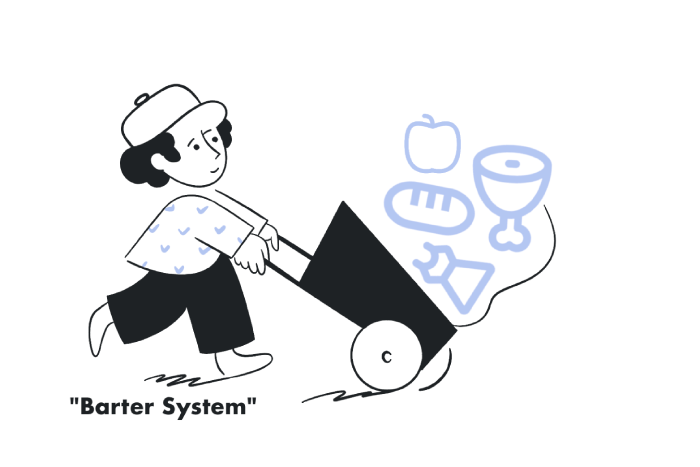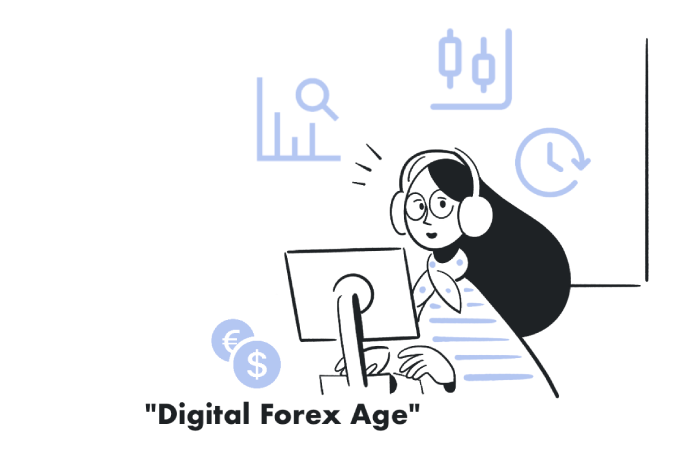A Brief History of the Forex Market
A Brief History of the Forex Market
"Uncover the fascinating evolution of Forex, a journey through gold standards, floating rates, and the technology shaping currency trading today."
Wikilix Team
Educational Content Team
15 min
Reading time
Beginner
Difficulty

Suppose you've ever traveled abroad and traded your local currency for another currency. In that case, you have already set foot in the vast ocean we call the foreign currency exchange market - or Forex. That currency exchange you briefly did at the airport exchange station is a small sliver of a market that is so large, so liquid, and so infinitely powerful that it moves the wheels of global trade and finance every day. Forex is not only for banks and giant corporations; it is a web of boundless opportunities that connects every corner of the globe.
Consider major financial trading hubs like London and New York, where daily trades and exchange rates significantly impact them. Even in rural small towns, far from any city, the same currency exchange rate can change the price of food, such as bread, and is linked to the global trade flow.
To understand and trade currencies today in a constantly trading, 24-hour currency exchange market, we must travel back in time to learn about how and when this trillion-dollar marketplace was born, shaped, and evolved over hundreds of years.
From Barter to Money
The foreign exchange market activity has existed long before there were computers, stock tickers, or printed company notes. Thousands of years ago, societies used the barter system to trade goods and services without any money. An ancient farmer might have traded his grain for a pot from a local craftsperson, or an ancient fisherman could have traded his fish for cloth.
The issue was clear: the barter system was not time-efficient. Society had to find a monetary medium of exchange that could hold the value of anything and be more or less universally tradable. Throughout history, various forms of commodities have been utilized as a store of value, including gold, silver, and salt. Because these commodities were durable, scarce, and widely accepted, they were interchangeable across territory.
As trade routes expanded—from the Silk Road, where merchants carried gold pieces from Persia to Roman coins purchased in Italy—the need for currency exchange became essential to facilitate trade. A merchant may have paid potential taxes when exchanging the Persian valued gold coins for appraised coins if trade routes forced them into destination swaps. This was when the idea of foreign exchange came to fruition.

Medieval Money Changers
Swift forward to medieval society, and the first professional money changers are seen in market squares throughout Europe. Italian banking families, primarily in Florence and Venice, were accompanying this surge of early currency exchange. These merchants changed one currency into another and made use of promissory notes to facilitate transactions in cross-border commerce.
Bill of exchanges— 'a written order in which to pay a player a certain amount in a particular currency at a specific time' were also invented during this time and added additional complexity to exchanges without the need to carry copper, gold, or silver.
The Gold Standard Era
The next landmark of cash and trade occurred in the 19th century with the emergence of the Gold Standard. Under this system, the value of the currency of any country was tied directly to a specific quantity of gold. An example is the British pound, which was defined as 113 grains of pure gold. This allowed traders and investors to feel confident that there was a fixed, idiomatic value to currency that contributed to international trade.
The Gold Standard minimized the uncertainty of currency exchange rates but also limited the possibility for countries to adapt currency policy during times of crisis because the money supply was directly connected to gold reserves. Nevertheless, for a while, the Gold Standard provided a stable framework for the international finance system.
The Collapse of the Gold Standard
World War I disrupted international trade, and many countries suspended the Gold Standard. There was a desire to print more currency to fund the war, which created inflation, and therefore, the peg to gold could no longer be sustained.
After the war, there were efforts to try to reinstate the Gold Standard, but it wasn't until the Great Depression in the 1930s that the Gold Standard was thoroughly dismantled. Countries abandoned pegged gold convertibility and adopted more flexible monetary systems.
The Bretton Woods Agreement
In July 1944, as World War II was drawing to a close, global leaders convened in Bretton Woods, New Hampshire, to create a new international monetary system. The Bretton Woods Agreement pegged most currencies to the U.S. dollar, which was convertible to gold at $35 an ounce.
The Bretton Woods Agreement established a prominent role for the U.S. dollar as the world's reserve currency. Also, it established separate supranational possibilities like the International Monetary Fund (IMF) and the World Bank that had the mission of achieving global economic stability.
For some time, the Bretton Woods Agreement worked. Currency exchange rates were fixed but adjustable under extraordinary circumstances, and world trade flourished. By the end of the 1960s, the United States was running large budget deficits due to social programs and the war in Vietnam. The country's gold reserves were dwindling, and confidence in the conversion of dollars to gold was diminishing.
The Shift to Floating Exchange Rates
In 1971, Richard Nixon shocked the world by suspending the conversion of dollars to gold — in effect, ending the Bretton Woods system. This event began the age of floating exchange rates, where the value of currency would, to some extent, be determined by the forces of supply and demand.
After this point, the modern foreign exchange market as we know it began to emerge, where currency was allowed to fluctuate, and traders could either profit (or lose) from those fluctuations. Although the shift to floating currency could lead to volatility, it also recognized the realities of a global economy that was becoming more integrated.
Technology Changes Everything
Finally, in the 1980s and 1990s, technology transformed the foreign exchange market forever. With computer networks, banks and financial institutions could trade and complete transactions in seconds as compared to the slower manual systems of the past. By 1990, the Electronic Broking Services (EBS) platform was built to offer major banks a centralized way to trade currencies electronically.
Then came the internet boom. Foreign exchange market trading was no longer just a function of large financial institutions. Retail brokers began granting merchants access to the markets with only a small amount of capital. Back in the early days of the spot market, it was an exclusive high-barrier market, which is no longer the case, becoming an open market with millions of participants worldwide.
The State of Forex Today
Today, the Forex market is the largest and most liquid financial market on the planet, with a volume exceeding $7 trillion per day. It is traded 24 hours per day, 5 days a week, as the market follows the sun from Sydney to Tokyo, London, and New York.
Market participants include central banks, multi-national corporations, hedge funds, investment managers, and everyday retail traders. Today, currency trading serves as many things:
• Facilitating trade and investment across borders
• Hedging against currency-related risks
• Speculation and making profits
Technological advancements such as algorithmic trading, mobile trading applications, and artificial intelligence have accelerated the exponential speeds and accessibility of the market.

Lessons Learned from History
The historical record of the Forex market is much more than a linear and chronological series of economic events; rather, it is a story of humanity's ongoing relationship with connecting, trading, and changing. The market emerged out of the need to trade a currency with value - from ancient merchants trading coins, along dusty trade routes, to the glimmering world of high-frequency traders executing thousands of orders per minute, we are still doing the same thing today: we are exchanging value and providing an exchange between borders.
Understanding this history gives traders a better sense of the forces that move currencies today. Political events, policies, banking, technology, and social trends can move exchange rates in a heartbeat. The more we understand about how and why these things happened in the past, the better we can navigate today - and maybe even the future.
Final Words
The Forex market didn't just appear out of thin air. It has developed over hundreds of years, transforming in response to wars, economic pressures, technological advances, and the innate human desire to trade. Each successive shift in the market, from barter to the Gold Standard, from Bretton Woods to floating exchange rates, has made it more complex and dynamic than ever seen before.
Whether you are a foreign traveler exchanging cash for your vacation, a business hedging against currency-related risks, or a trader speculating on the euro-dollar pair, you are participating in a market that has a storied and rich history. And as technology continues to evolve and global economics move in the forward direction, so too will the Forex market — just as it has done for thousands of years.
What's Next?
Keep building your knowledge with our structured learning path. Each section builds upon the previous one.
This is the first section
You're at the beginning of your journey!
This is the last section
You've completed this course!
